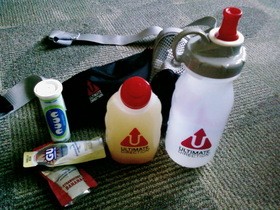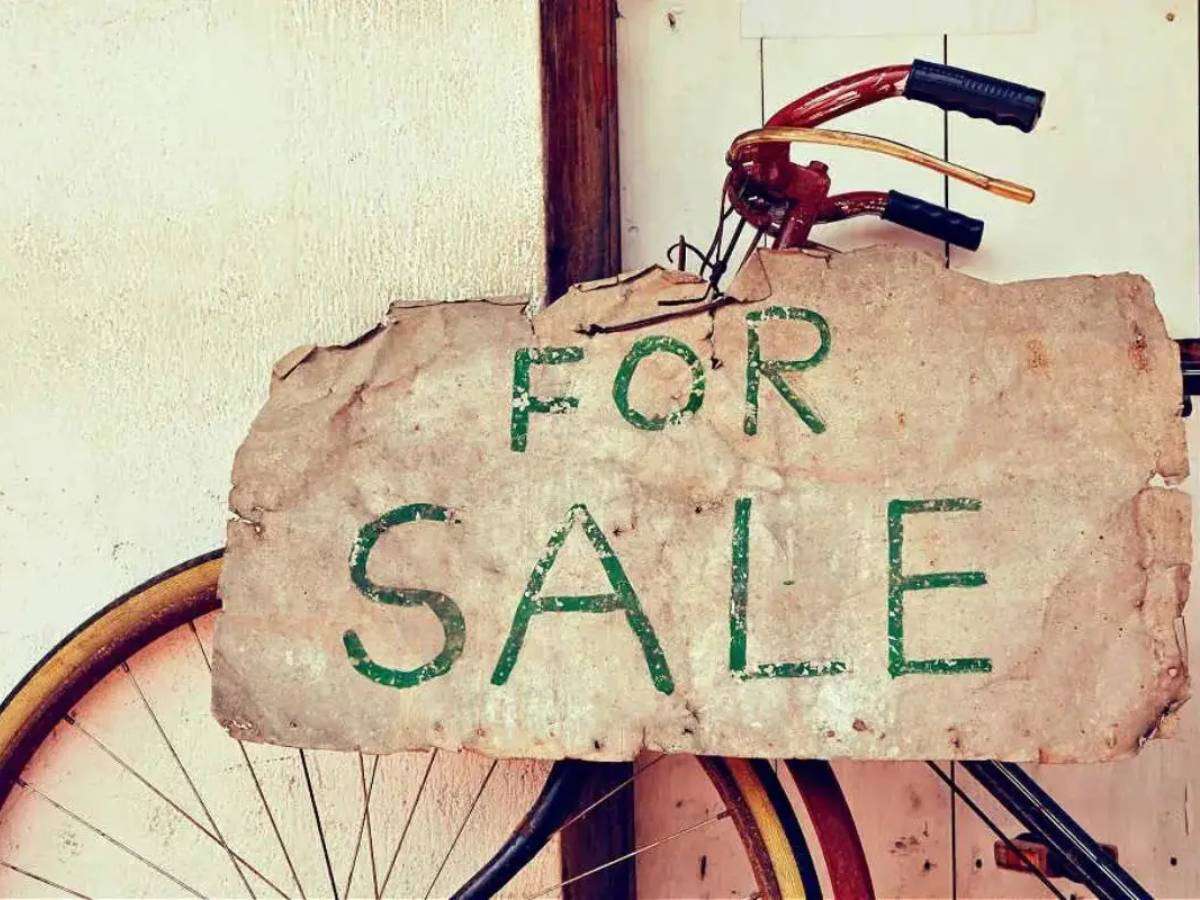 On my last long run, which was an 18-miler, I carried one 24 oz. bottle of diluted Gatorade and one PowerBar Gel.
On my last long run, which was an 18-miler, I carried one 24 oz. bottle of diluted Gatorade and one PowerBar Gel.
Frankly, this probably wasn’t enough. I ran out of Gatorade too early, and another Gel might have helped.
Wouldn’t it be nice if you could know exactly how to re-fuel during endurance training and competition to ensure your body had everything it needs to perform at its best?
The good news is that you can know, and the next few posts are going to deal with this issue.
The reason why re-fueling is necessary during endurance training and competition is that you lose things (water, sodium, carbohydrate calories, protein) that need to be replenished, and you gain things (lactate acid) that need to be disposed of or need help processing.
There are an endless number of sports drinks, gels, bars, pills, mixes and others to help the athlete achieve this during endurance exercise.
Before we get too far ahead of ourselves, it would be wise to understand a bit more about the body and re-fueling.
Myth: Replace What You Lose
One of the biggest myths related to the re-fueling needs of triathletes during training or competition is: My re-fueling strategy is to replace what I lose.
The idea of "replacing" what you lose assumes that the trick is pouring into your body the same amount of whatever you are expending, gram for gram, calorie for calorie, ounce for ounce. This sounds logical if it weren’t for the fact that the issue isn’t just the amount, but the amount the body is capable of absorbing and converting into usable energy.
For example, during prolonged endurance exercise, the body replenishes lost fuel per hour as follows:
Fluids Lost: 30-90 ounces
Fluids Capable of Assimilation: 17-28 ounces
Ideal Replenishment: 20-33%Sodium Lost: 2000mg
Sodium Capable of Assimilation: 500-700mg
Ideal Replenishment: 20-35%Fuel (Carb Cal) Lost: 700-900
Fuel (Carb Cal) Capable of Assimilation: 240-280
Ideal Replenishment: 30-40%
So as you can see, the body is not capable of absorbing and utilizing new fuel at the same rate that it uses it.
Replenishing Carbohydrate Calories
Let’s take carbohydrate calories for example.
Let’s say you discover that you lose 700-900 an hour, and decide you are going to take in 700-900 carb calories an hour to "replace" them. For most athletes, the calorie oxidation rate and gastric absorption rate typically allow for no more than 300 calories to be absorbed and converted into fuel each hour.
Translation: expect some serious stomach problems trying to consume 700 to 900 carb calories per hour with the "replacement" idea.
Replenishing Water
Another example would be water. It is commonly said, "Drink as much water as you can, and every chance you get."
Failure to rehydrate poses a substantial problem during endurance events, particularly with hot and humid conditions. However, fluid replacement requirements have been emphasized to the point of overcompensation, particularly drinking excessive amounts of water.
This has led to an even more serious and life-threatening condition of dilutional hyponatremia (low blood sodium concentration). A recent study found that overhydration was a far more frequent finding in collapsed runners than dehydration.
The problem arises when your total activity level exceeds 3 hours, and fluids have been solely replaced with plain water. Bottom line: you must replenish salt along with water.
Proper Triathlete Refueling Strategies
Fluids, calories and electrolytes cannot be replaced 100% or even 50%. Attempting to do so may cause cramping, vomiting, gastric distress, diarrhea and other problems.
As a rule of thumb, you can replenish about one-third of what you lose. Don’t let this fact discourage you. The human body knows you can’t fully replace what it looses tit for tat, and the mind and body has ways of compensating, enduring and dealing with it.
A proper re-fueling strategy for a triathlete avoids 2 critical mistakes:
(1) taking in too little; and
(2) taking in too much.
The focus is not replacing what you use up, but replenishing what your body can assimilate and utilize. Therefore, the proper re-fueling goal we are trying to achieve is NOT to replace what you lose, but to replenish what you can use.
There are a lot of endurance-specific fueling products on the market from various sports nutrition companies such as Hammer, Cytosport, and Accelerade.
Before our next post on this same topic, here are a couple articles worth reading to begin familiarizing yourself with the options:



